

Review of nine small, folding day-trimarans (2010)
by mike waters n.a.

As much as I like the basic concept of Jim's new boat, there are a couple of aspects that I need to mention. To put a light rig from a Hobie 16 on a boat that is FAR heavier and more stable than the boat for which it was originally designed, might prove too much for this mast, especially since the shrouds are more inboard than normal—so raising the mast compression. Normally, a Hobie would just 'go over' and so relieve the load—but not this beamy 800 lb twenty-footer! Also, the too-typical, puny 4-oz sail cloth of a regular Hobie 16 sail, is hardly man enough for this job. It's certainly a low cost start up solution and we've all admired Jim for his support to those with lesser means, but I think any builder should plan on something more substantial to be a better match for this cruiser. Finally, as the ama looks to be quite substantial in volume (guessing about 800 lbs buoyancy?), I have some concern for the strength of the single plank akas (cross beams) that act as swing arms for folding, should the builder decide to choose regular construction lumber. Sooner or later, someone will push this boat hard enough to bury an ama and that's a LOT of leverage on those arms, even if they are cleverly designed to act like huge flexible wooden leaf springs. But without seeing the details, I can only suggest that some good laminated material might be in order for these parts and perhaps Jim's plans already call for that or even some added carbon here as well. But I like the general concept and even though the boat will be no speedster, it's a design that can give a young couple on a small budget, a lot of weekend pleasure provided the conditions are within what the rig and swing arms can take.

- This particular Performance Index is simply a product of the principal things that affect multihull performance (LOA × BOA × Sail Area) all divided by the listed Weight. By taking the square root of this value, you then get a figure that very roughly reflects speed for comparison purposes. Yes, I agree there are a lot of factors NOT taken into account with this crude approximation, but the base figures used are easy to find and at least the general trend is indicated—and quite fairly so I believe.
TRIKALA 19 The Trikala 19 is from the board of imaginative designer Kurt Hughes. This boat was actually in production for a while in Spain but since then, a few have also been built by amateurs. A couple reportedly even cruised the Mediterranean in one! This is a boat design that always frustrated me—perhaps wrongly so.

For me as a designer, the looks of a boat are almost as important as its performance and the Trikala looks quite stunning from the bow, with its long fine entry and streamlined deck lines. But then, as it opens out to encompass a very wide cockpit aft, it always appeared to me that something distracted the designer or he just lost interest, as the view from the stern quarter is not so elegant. It's no doubt practical but it's a shame that its wonderful efficient appearance from the bow could not in some way be maintained at the stern. But with that very personal comment aside, this is an interesting boat with no doubt a good performance. It would be a particularly interesting boat to build for someone wanting to learn about composite construction with a larger boat in mind 'down the road', as the Trikala is lightly built of foam core under fibreglass skins and would therefore provide a good learning experience. The boat does not fold in a conventional way but like some other small designs by Kurt, uses a sliding system with tubular akas, the port ones, sliding into tubes with Teflon runners behind the starboard ones—so the two sides are not exactly symmetrical—a factor that some potential buyers find disturbing, though the difference is purely cosmetic. (The larger 7 m, L7 by Mike Leneman, also uses a similar sliding system – though in this case he uses fiberglass channels—see my REPORT on SMALL TRIMARANS for more on the L7, available through my website.)

W17 This design of mine was created during 2009 and completed in 2010. It's hard to review your own boat designs without being accused of inevitable bias, so I will simply tell you about it and point out the features I've incorporated and why. However, time has now shown [2020] it's as good as I had hoped and expected her to be.
This is a primarily a boat 'to just enjoy sailing in'. She's designed to be comfortable, way drier than average, fast and efficient and is just at home on a weekend camping cruise as on the circuit. With several boats now [2020] having each sailed and cruised over 1000 miles and with open sea passages of up to 60 miles safely accomplished, she is certainly proving very capable in experienced hands, employing intelligent sail reduction when things get rough. Her seemingly simple hull forms give a very high efficiency and she has proven quiet and dry through a chop and with her wing mast and unique ama shape, shows an unusual ability to climb to windward with minimal leeway. [Following an independent test and review by Wooden Boat Mag., I was asked to explain why the W17 performed so well with such simple shapes and my reply to this was published in the prestigious Professional Boatbuilding magazine #169 .. and is available to read on this website under 'Published Articles'].
Sailing this boat is indeed a magical experience and dozens of boats are now (2020 update) being built in over 30 countries. She's a little more time-consuming to build than others her size, but numerous owners have since dubbed her, 'The Miata of the Seas' . For them, a few more hours is well worth the effect and this boat will take you to a whole new level above any production boat of this size out there .... and also cost you less.

Comparison Chart (created in 2010)
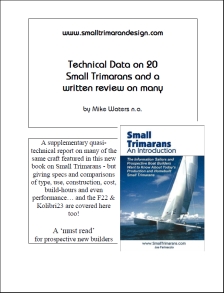
Boat Profile
Seaclipper 16
A folding trimaran for the home builder
From Issue January 2017
I ’ve built more than a few boats for myself in the past 38 years, and in all that time I have never been tempted to build a multihull. Why go to all the work of building two hulls, let alone three, when I’ve never found any of my single-hulled boats lacking in any significant way? I started getting answers to that question as soon as I stepped aboard a Seaclipper 16 designed by John Marples of Searunner Multihulls and one of nine designs in the Seaclipper series of trimarans. The hull is constructed of 7 sheets of 1/4″ six-ply marine plywood, five sheets of 3/8″ nine-ply, and lumber in commonly available sizes. Fiberglass-and-epoxy sheathing is optional. The instructions are geared for novice builders; full-sized templates for the bulkheads are provided in the plans. Stringers connecting the bulkheads define the shapes of the plywood panels for the hulls. The 15′ 11″ vaka (center hull) has a flat bottom that will take to landing on the beach without digging in or causing the kind of wear you’d get with a sharp V hull. The amas (outrigger hulls) have bottom panels set at an angle, deeper outboard than inboard. This configuration adds a fin-like element for increased lateral resistance for sailing in shallow water with the daggerboard pulled up. The angled ama bottoms also present an edge to the water, keeping the amas from slapping the waves when they’re close to the water’s surface; it’s a quieter ride. The amas’ bottoms are positioned higher than the vaka’s bottom, so their edges are not subjected to wear when the boat is hauled up on a beach.
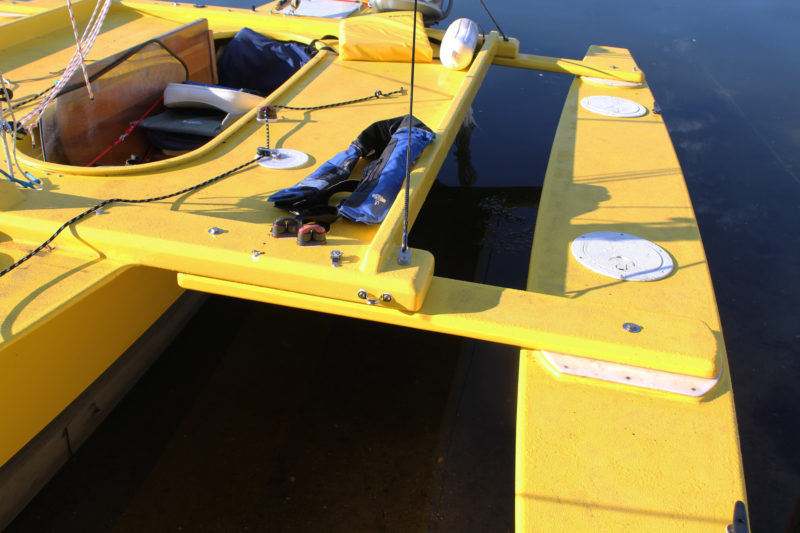
Each of the four swing-arm akas has three bolts: one securing the pivoting part of the aka to the ama, and two (one of those anchoring the shroud bridle) connecting the pivoting part of the aka to the fixed central section on the vaka. Removing the inboard bolt allows the swing arm to pivot, moving the ama aft and inward.
The akas (crossbeams) can be made in three ways: as one piece bolted to the three hulls, hinged to fold the amas on top of the vaka, or as swing-wings, like LIMONADA shown here. With the swing-wing, the amas pivot aft and nest against the vaka, bringing the beam down from 11′ 3″ to 7′ 7″ for trailering and to fit in a standard marina slip. The swing wings can function whether the boat is afloat or on a trailer, so they are handy when launching or landing at a crowded boat ramp. The swing wings don’t require any hardware beyond nuts and bolts, and have an advantage over the hinged akas: there’s no need to lift an ama and set it down gently on the vaka. The Seaclipper 16 can be built as an open-cockpit cruiser, or as a daysailer with a tandem cockpit, with the helmsman sitting in the aft position, legs straddling a centerboard trunk and the crew sitting forward. The 7′-long open cockpit has side decks between the akas that offer more options for seating, moving around while under sail, and sleeping aboard while moored.
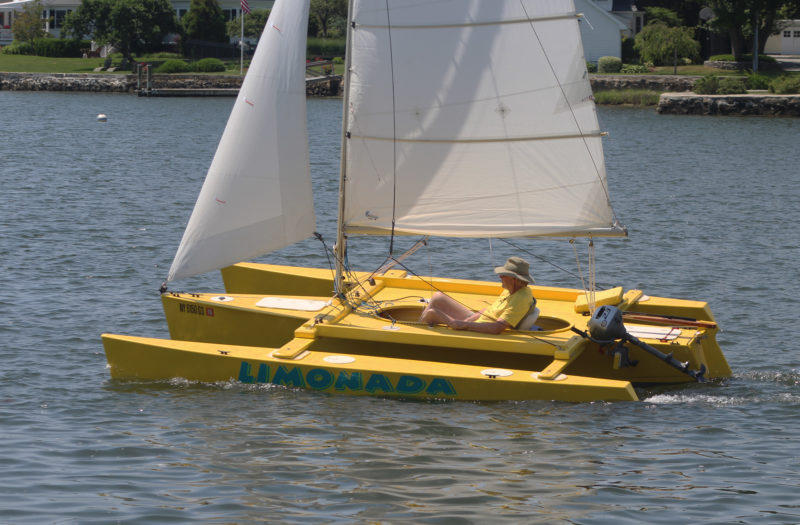
John Marples, designer of the Seaclipper 16 and builder of LIMONADA, goes for a sail on the Mystic River.
L IMONADA, as an open-cockpit version of the 16, has a daggerboard deployed through a slot in the cockpit sole. A softwood stick wedged in the slot keeps the board down; it has a loop of line at its top for quick removal and raising of the board. The cockpit sole is high enough above the waterline that any water coming into the cockpit drains right out. The rudder is mounted on a false transom, hinged at the top, that allows the rudder to kick up when meeting an unexpected shoal or to be retracted when coming ashore. The downhaul at the bottom of the false transom leads to the cockpit for easy operation. The rudder blade is balanced and has enough of the blade ahead of the pintles and gudgeons to lighten the load on the skipper when coming about. It also allows the arms of the rudder yoke to be short and unobtrusive. The lines from the yoke lead forward to pedals in the cockpit to for hands-free steering. A tiller above the yoke allows steering while sitting on a side deck and is the means of raising the rudder when coming ashore.
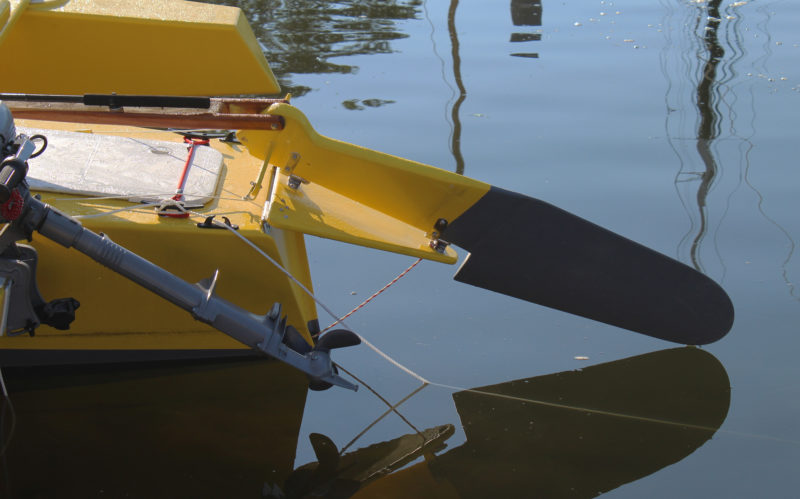
A hinged false transom allows the rudder to be kicked up. The tiller pulls the rudder up and holds it. The line at the bottom of the false transom holds the rudder down while the boat is underway.
The Seaclipper 16 is designed to take a Hobie 14 sailing rig. The pivoting aluminum mast, roller-furling jib, and fully battened mainsail are readily available from a wide network of Hobie dealers and may be found used in online classifieds. The Hobie 14 has a beam of 7′ 8″, so the Seaclipper 16, with a beam of 11′3″ can take better advantage of the 146-sq-ft sail rig without flying a hull to the brink of capsizing. Dyneema shrouds, secured to bridles spanning the side decks, support the mast. The plans include specifications for an unstayed wooden mast. For auxiliary power, a short crossbeam aft of the port aka serves as a mount for a small outboard.
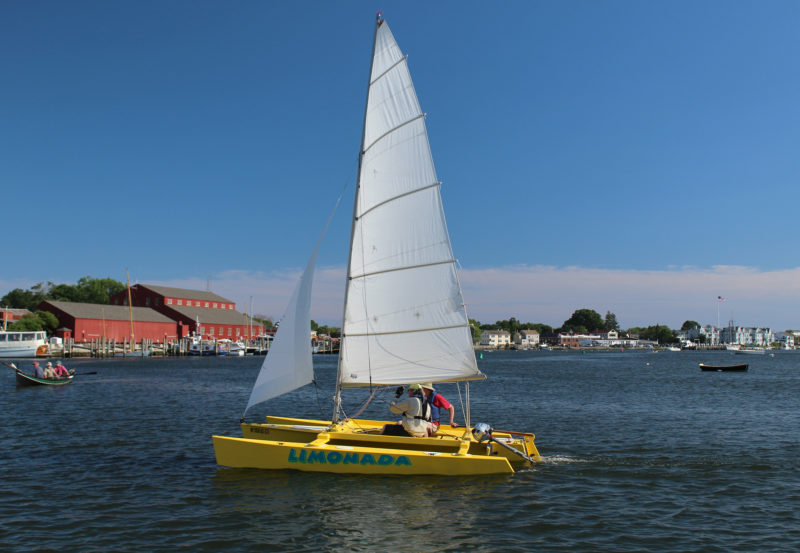
The side decks provide seating when two are aboard, and the steering is then done with the tiller, not the foot pedals.
I had a chance to sail LIMONADA, the Seaclipper 16 built by Marples for Mac MacDevitt, on Mystic River near Mystic Seaport. Stepping aboard, I got my first lesson in the values of a multihull. I didn’t have to lunge for the centerline as I do with my monohulls to keep them on an even keel. The trimaran has plenty of stability no matter where I put my weight and the amas (outer hulls) have enough volume of to support my 220 lbs. Without having my movement aboard the boat restricted by the nagging demands of a monohull, I could wander around the boat. The decks are all flat, so the footing is good everywhere. While I like the sweep of a curved sheer line, the Seaclipper’s flat decks simplify the construction of the boat and provide the geometry required for the swing-wing akas.
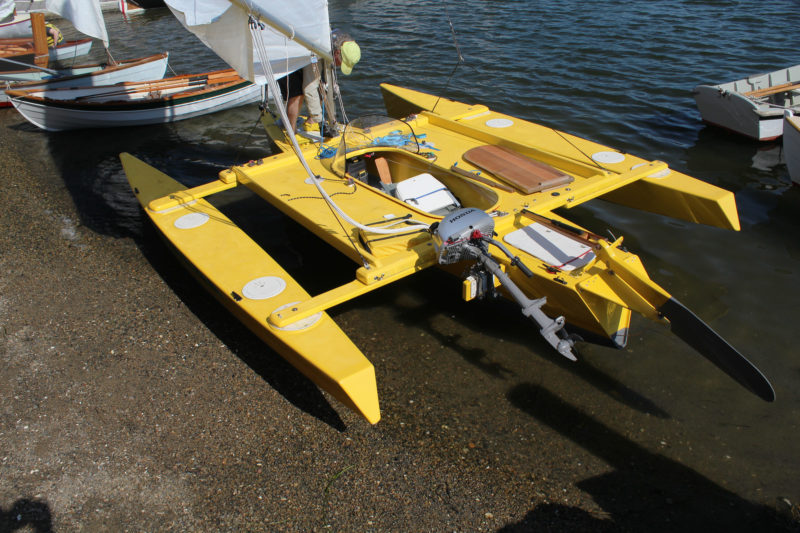
The deck surrounding the cockpit is large enough to set up a tent for sleeping at anchor. The windshield was added by the builder to block spray when sailing into a brisk breeze.
I liked being able to walk around the boat while it was under sail with Mac at the helm. I never get to see my own boats moving through the water, so stretching out on an ama to watch the vaka’s bow at work was a treat. The 7′-square deck around the cockpit offers a place to pitch a tent. Mac has a two-person tent with an oval hole in its floor to match the cockpit opening. He can sleep to one side of the cockpit, sit comfortably upright with his feet in the cockpit and have access to the gear stowed there. The amas and vaka offer plenty of room for cruising and camping gear; commercial plastic hatches offer access.
I took LIMONADA out by myself and enjoyed steering with my feet and having my hands free to manage the sheets. Nestled down in the cockpit on a padded seat with a backrest, I was very comfortable and relaxed. The sheets were right in front and could be cleated off, making sail-handling a breeze; there was no need to switch sides or do-si-do with a tiller when coming about. During my outing the weather was warm and the wind was light, perhaps 8 to 10 knots at best with a few gusts, but in a cold wind, being mostly below deck level would be a boon. Mac had made a removable windshield that wraps around the forward end of the cockpit for even greater protection from cold wind and spray.
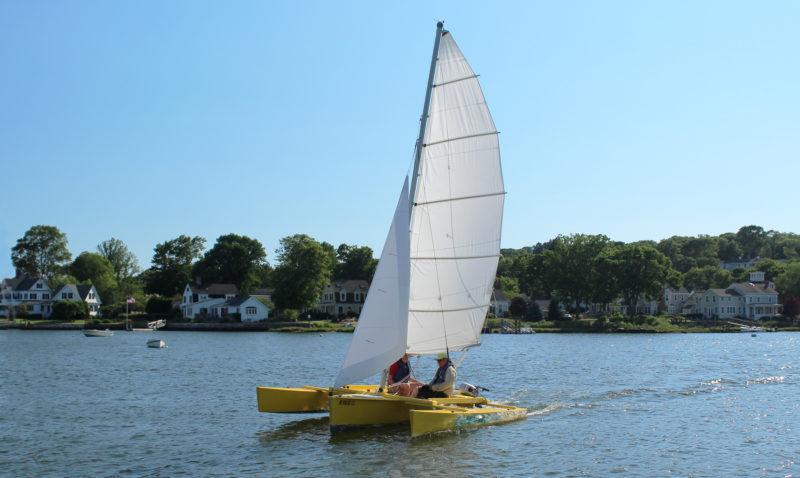
With Marples and owner Mac MacDevitt aboard, LIMONADA flies the windward ama. The leeward ama still has plenty of freeboard.
The light wind was more than enough to get Mac’s Seaclipper going at a brisk pace and fly the weather ama. There was no spray, so I stayed dry, and even with the boat moving at a good clip I didn’t notice any water coming up through the daggerboard slot.
I was surprised by how well the Seaclipper could come about. With three hulls in the water, I thought there would be a lot of drag in the turns and that the boat would get bogged down, but the rudder blade and the centerboard have enough area to swing the bow around before the boat loses momentum. I never got caught in irons, but I backed the jib for a moment to hasten the bow’s falling off and the filling of the main.
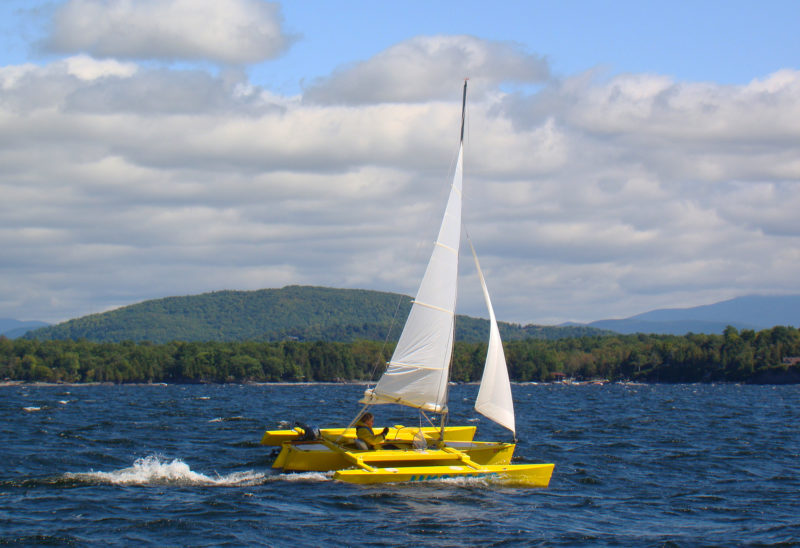
LIMONADA owner Mac MacDevitt reports that his Seaclipper 16 is “super fun in a stiff breeze.” Here, sailing with a reefed main on Lake Champlain, he estimated his speed at about 13 knots. “It was exciting, but I felt safe and secure.”
Christopher Cunningham is the editor of Small Boats Monthly.
Seaclipper 16 Particulars
Length/15′ 11″
Beam/11′ 3″
Beam, amas retracted/7′ 7″
Draft, hull only/11″
Draft, board down/2′ 7″
Sail area/127 sq ft
Displacement, dry/400 lbs
Displacement, full load/800 lbs
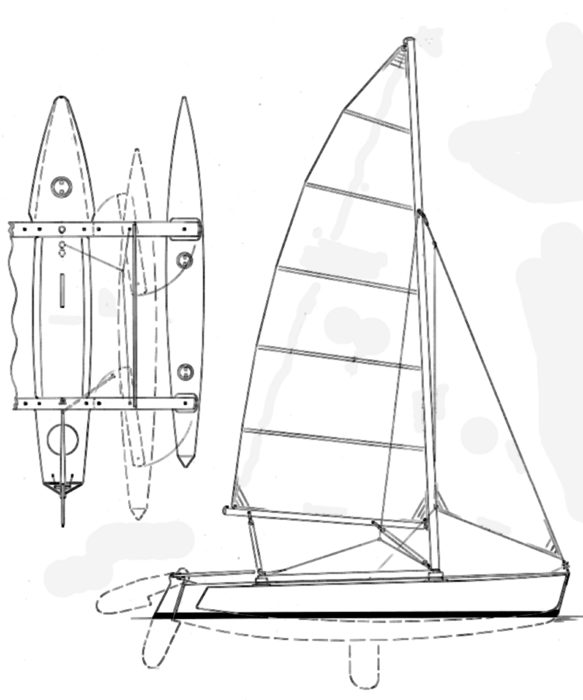
Plans for the Seaclipper 16 are available from Searunner Multihulls for $180.
Is there a boat you’d like to know more about? Have you built one that you think other Small Boats Monthly readers would enjoy? Please email us!
Share this article
Join The Conversation
We welcome your comments about this article. If you’d like to include a photo or a video with your comment, please email the file or link.
Comments (2)
Thanks for the multi-hull perspective. Lots of cool ideas.
I’ve been looking. This could be the one!
Comments are closed.
Stay On Course
More From This Issue
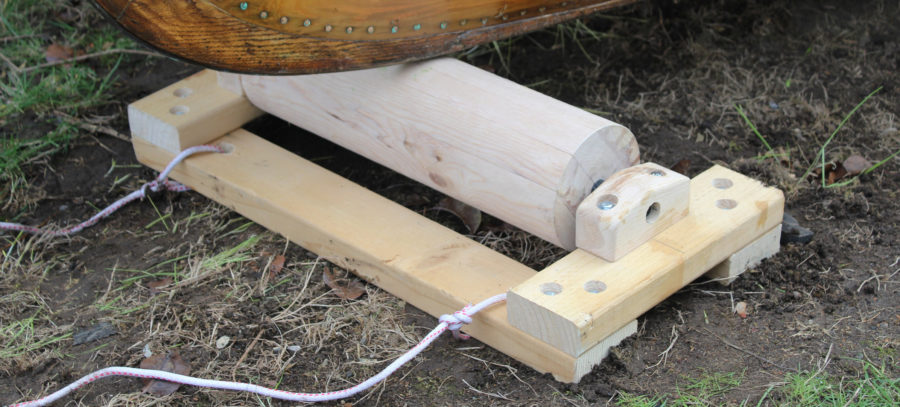
From The Editor
Roller Carts
Like Ben Fuller, I have more boats than trailers to haul them, so when I read his article on the roller cart he built with Joe Liener, I was convinced...
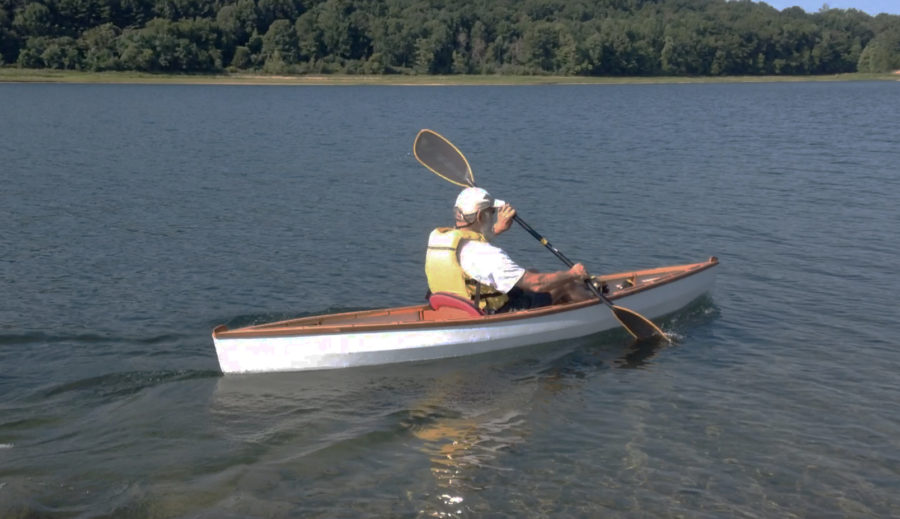
I already had a sailing dinghy and a sail-and-oar skiff in our two-car garage, but I thought there was room for one more boat, a small one, alongside my wife’s…
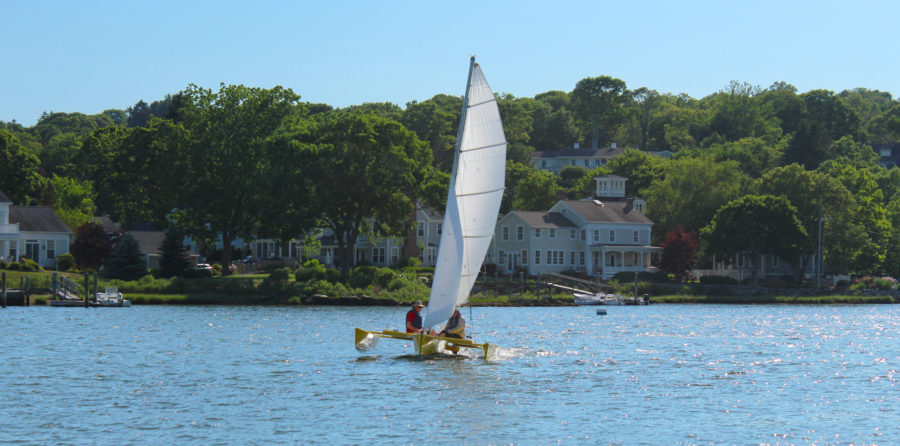
I’ve built more than a few boats for myself in the past 38 years, and in all that time I have never been tempted to build a multihull. Why go to…
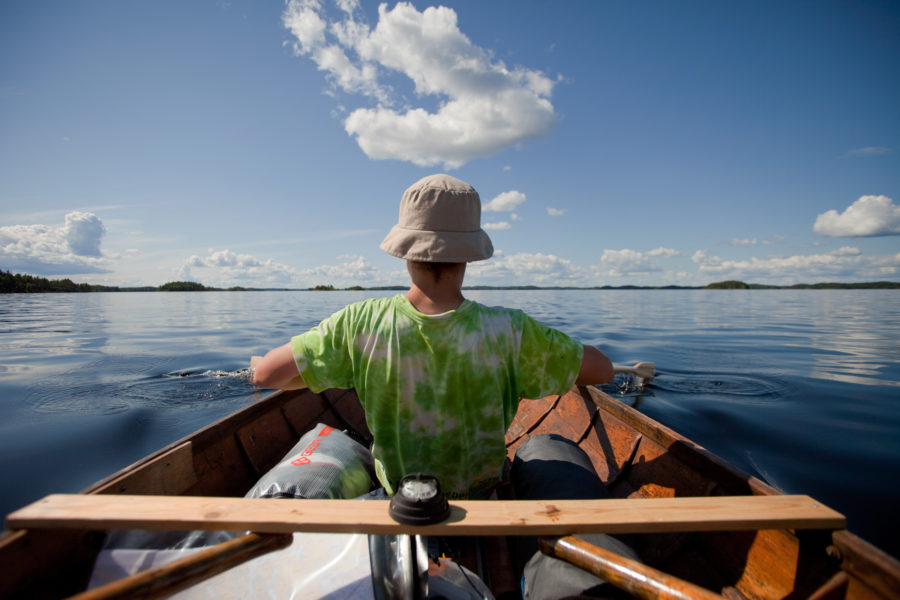
A Lakeland Row
A couple of years ago I spotted a long, lean traditional Finnish rowing boat for sale online. It had been designed and built for bi-stroke racing with a rower on a…
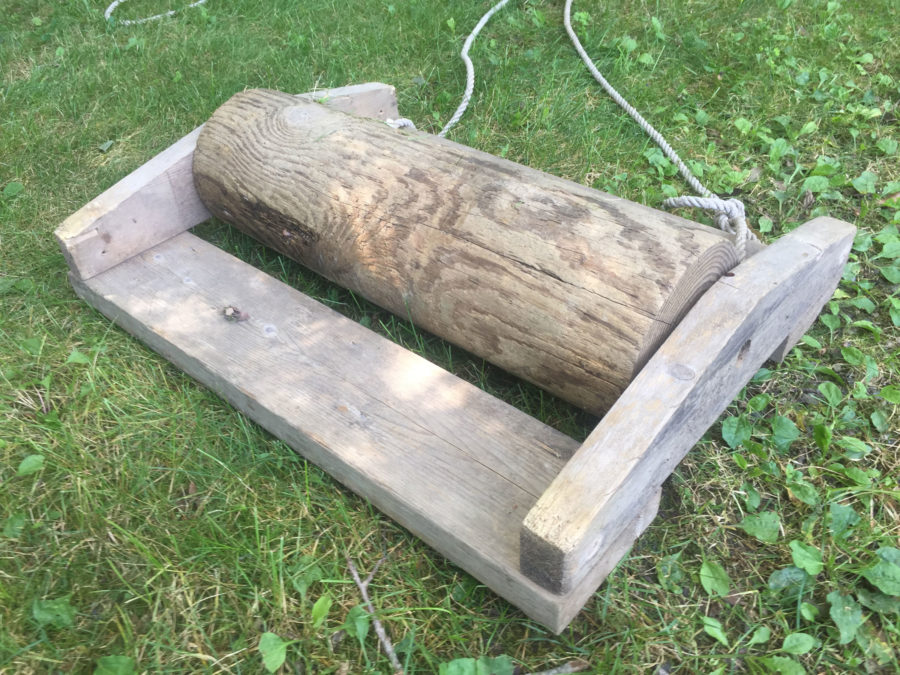
Joe’s Roller Cart
Decades ago, my friend Joe Liener introduced me to duckers and melonseeds at his little boathouse in Wittman, Maryland, on the eastern shore of Chesapeake Bay. Joe had retired some…
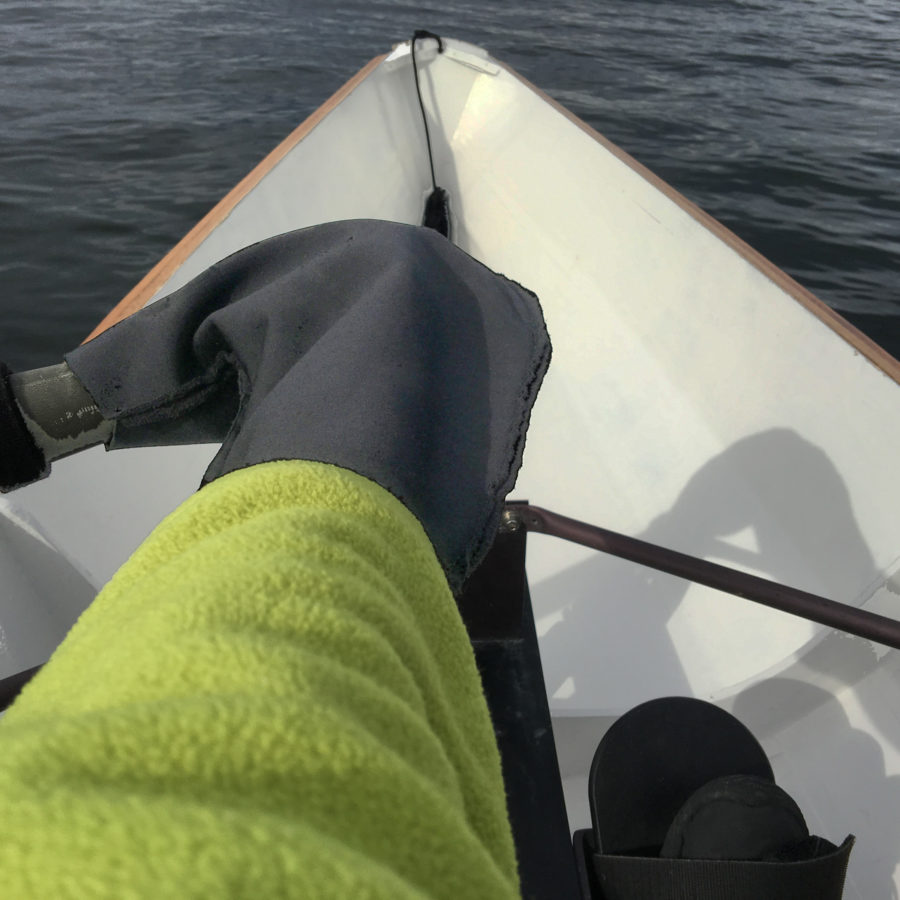
If I can keep my head, feet and hands warm while I’m rowing in cold weather, the rest of me stays warm; pogies are my winter hand covering of choice.…
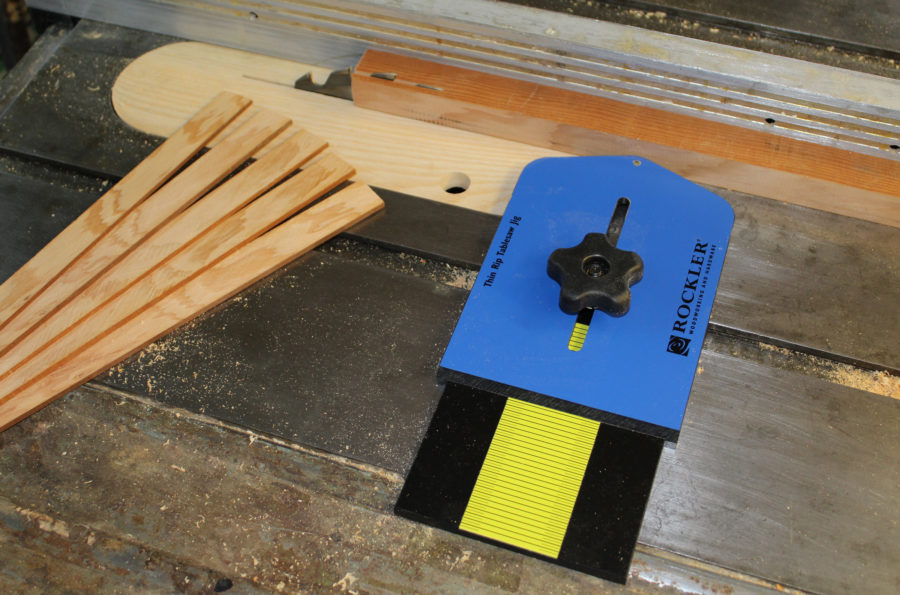
Product Reviews
Thin Rip Table Saw Jig
If I had my druthers, I’d make knees, breasthooks, and stems—all those angle-reinforcing structural parts of boats—out of grown crooks, but they’re hard to come by and take time to…
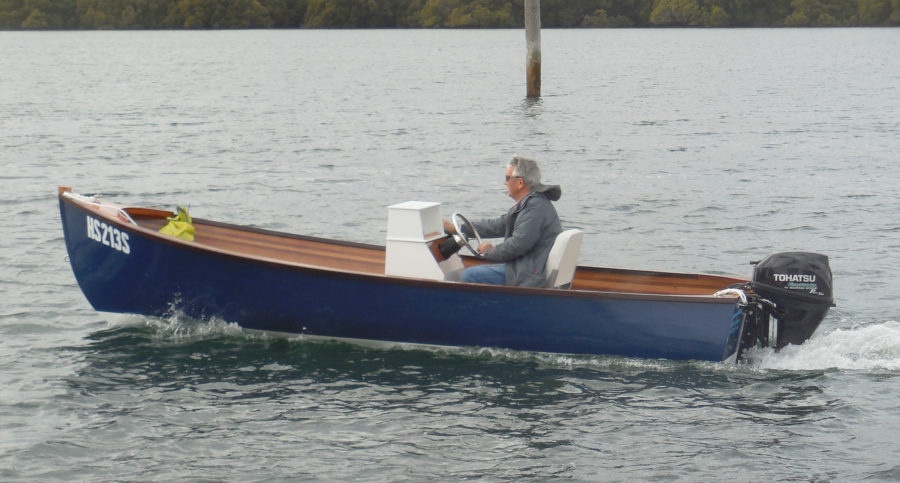
Reader Built Boats
John Adamson visited the WoodenBoat campus in the fall of 2009 and was taken by two Jericho Bay Lobster Skiffs: the original plank-on-frame version built by Jimmy Steele in the…
More Boat Profile
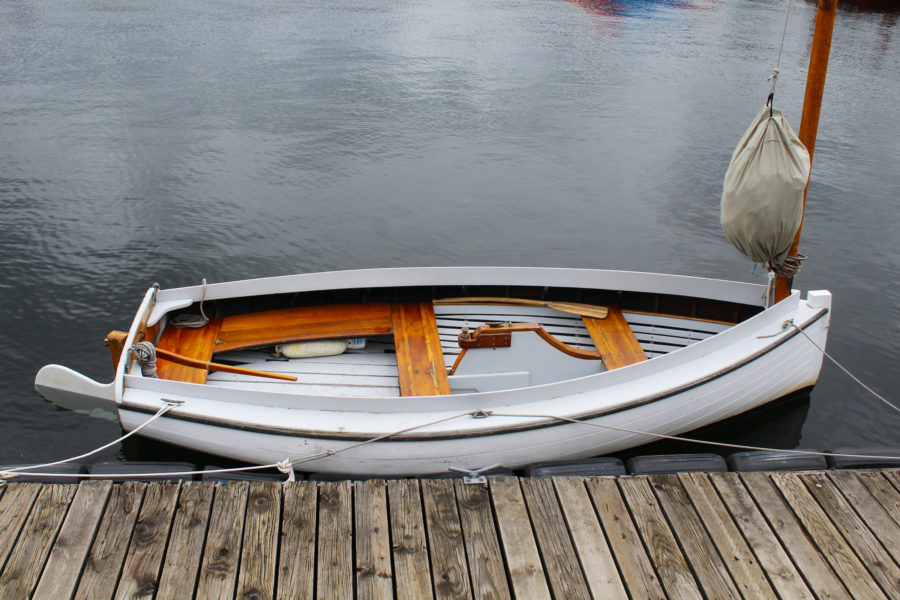
Woods Hole Spritsail Boat
The Woods Hole spritsail boat is a good example of workboats that became pleasure craft, as happened with so many New England fishing vessel designs. When a colony of summer…
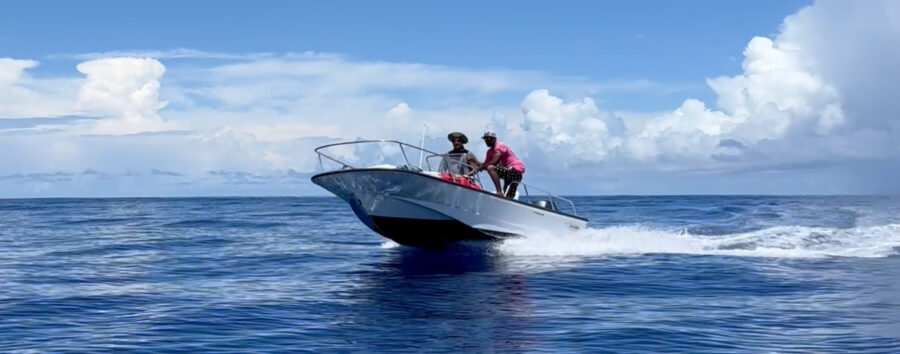
The Boston Whaler Montauks
Boston Whaler began offering a 16′ 7″ hull in 1961, and the company soon rolled out diverse models and marketing plans targeting every possible use from yacht tenders to bass…
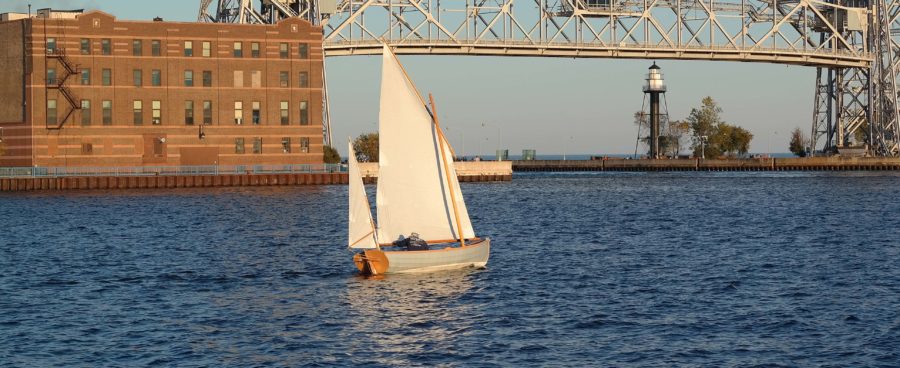
Calendar Islands Yawl
Jim Levang’s Calendar Islands Yawl is a real beauty. Maine designer Clint Chase acknowledges the influence of designers he admires, especially in his early work—Paul Gartside, Iain Oughtred, François Vivier,…
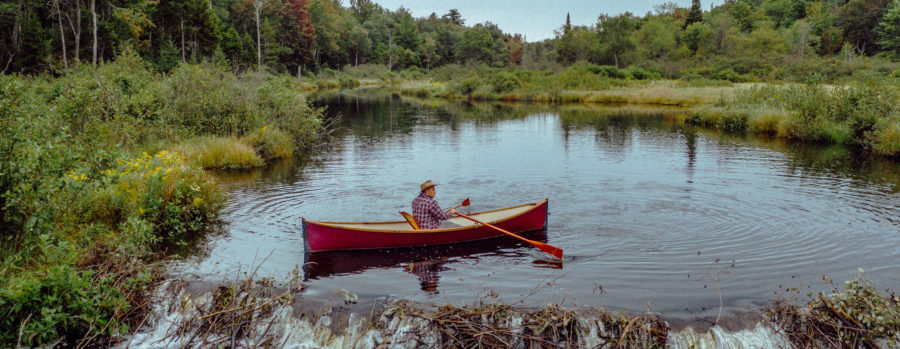
Vermont Dory
The Vermont Dory was first developed by AGB in 2004 to build upon the abilities of the original guideboats that had been in use in the Northeast since the 1800s.…
Subscribe Today!
Become a subscriber today and you’ll recieve a new issue every month plus unlimited access to our full archive of backlogged issues.
Already a subscriber? Sign In
Subscribe For Full Access
Flipbooks are available to paid subscribers only. Subscribe now or log in for access.
Great Looking Seaclipper 10 Trimaran Ready for Fun
by Small Tri Guy | Dec 17, 2015 | Self-built Small Trimarans , Small Tri Info - All | 0 comments
Check out the page here and another one here to see what I’m talking about.
The Seaclipper 10 is a fun design by John Marples . We’ve seen it previously in this post .
From what I’ve heard from others, this boat offers stability, ease of handling … and lots of grins for the person sailing it.
Many thanks to Bob for sharing these photos with us. You can also see the vendor where Bob purchased the sail for the boat within the “Comments” area on this page .
Submit a Comment
Your email address will not be published. Required fields are marked *
Notify me of followup comments via e-mail. You can also subscribe without commenting.
Blog Post Categories
- Production/Commercial Small Trimarans (291)
- Self-built Small Trimarans (678)
- Small Trimaran Audios (30)
- Small Trimaran Videos (289)
- Trimaran Design, Rigging, Construction Info/Links (222)
- Contact “Small Tri Guy”
Log in or Sign up
You are using an out of date browser. It may not display this or other websites correctly. You should upgrade or use an alternative browser .
Strike 18/20 or Seaclipper 20 trimaran first build?
Discussion in ' Multihulls ' started by mystrwizard , Sep 22, 2016 .

mystrwizard Junior Member
I am looking to build first boat and looking for easy build tri to use in Southern California off Marina Del Rey close to shore in ocean. Ive been looking at these three builds and wondering which might be more what I need. I like the idea of the wind screen on the Strike 18 and the fact that it uses hulls from others cats to make the build easy but how do they all perform? these would be stored on a trailer. Also might there be other options out there for easy builds. Mostly me and my son sailing, possibly 3 people but most of the time one or two people. Thanks! Reese
Richard Woods Woods Designs
I cannot comment about the Seaclipper 20 as I have never seen one for that matter, I haven't seen a Strike 20 either, just videos like this one https://www.youtube.com/watch?v=YWK7cOOtP_U I quote from an email after the owners 4th sail "we achieved 9 /10 kt to windward, 16 kt broad reaching under gennaker (14.8knots over 500 m and 14.3 over a nautical mile)". So not "touched 14 knots", but "averaged" it for a mile, a BIG difference as we all know That is a plywood hardchine main hull with Nacra 5.8 beach cat outriggers. I know the Strike 18 much better of course, having built and owned the prototype (BTW the plans show a lower windshield and higher wing) Lots of videos on my youtube channel, including this one easily overtaking a Windrider 17, so a good bench mark for comparison https://www.youtube.com/watch?v=Q4iFXdFuihw&list=PLT7PbPvOm8lzv_qjPJuA80kU1ugLfABgi&index=21 and this one sailing against a mylar sailed F24. 6ft longer, I suspect it's mainsail cost more than our whole boat! (our sails came from ebay, the jib was measured in 1972!) https://www.youtube.com/watch?v=ycsGLNuA6FQ&list=PLT7PbPvOm8lzv_qjPJuA80kU1ugLfABgi&index=25 There is no point in having a fast boat if it isn't easy to sail or won't do what you want when you want. So this video might help https://www.youtube.com/watch?v=JOYhtdFwTpU&list=PLT7PbPvOm8lzv_qjPJuA80kU1ugLfABgi&index=23 and try doing this on a small monohull (read the notes accompanying the video to see what I am doing) https://www.youtube.com/watch?v=pECFWJvXAow&list=PLT7PbPvOm8lzv_qjPJuA80kU1ugLfABgi&index=18 Having said that, the Strike 18 and 20 are designed for different markets. The Strike 18 is a day sailer/cruiser, see here for example: http://sailingcatamarans.com/index....les/449-strike-18-cruising-in-a-canadian-lake whereas the Strike 20 is really intended for those who want to race. It would, for example, be a great choice for someone who wants to win the new "we'll buy your boat for USD10,000" prize in next years Race to Alaska Remember that all boats are fast when sailed alone, you need to sail against others to get a true feeling of performance, as in the videos I show here. And, failing a test sail, videos give you the best idea of what a boat is really like We kept our Strike on the water a couple of years, but also had our Strike at home on a trailer for two seasons, so we got the assembly time down to something like 15 minutes from trailer to sailing. You may have seen one of my 22ft Wizard catamarans in MDR I hope that helps Richard Woods of Woods Designs www.sailingcatamarans.com
Actually I had already ordered the Study Plans for the Wizard and had also thought of that boat as a build, but feel that might be a bit much for what I need although did enjoy reading what it is capable of doing. Reese
redreuben redreuben
Scarab 18 from Ray Kendrick. I believe the boat in the vids has cat hulls for floats. http://www.teamscarab.com.au/scarab18/design.html http://www.teamscarab.com.au/scarab18/videos.html
Strike 18 plans, main hull only vs. with Quattro outriggers Not sure of the difference between the plans? are the plans complete enough with the main hull only to build the whole boat? info including the ams's, etc? Thanks! Reese
yes, and if you have problems I can always help explain things and also offer advice on suitable donor boats Richard Woods
Tom.151 Best boat so far? Crowther Twiggy (32')
mystrwizard said: ↑ I like the idea of the wind screen on the Strike 18 and the fact that it uses hulls from others cats to make the build easy but how do they all perform? these would be stored on a trailer. possibly 3 people but most of the time one or two people. Thanks! Reese Click to expand...

2far2drive Senior Member
Im the builder of the strike 18 shown as "what not to do". I personally found the spacing between the frames and the 1/4" ply to be just a tad worrisome, hence the natural sag you see in the picture. I ended up gluing in a small 3/4 x 3/4 stringer to try and remove some of the sag. I DID however mess the bow up just slightly. The had to do an emergency frame adjustment and I still didnt get the height quit right on BHD#1, but its ok. Being as I have let the boat sit totally unused and never even sailed for almost 2 years now, I couldnt tell you how it sails. I honestly lost all interest in sailing and trimarans until recently Ive felt the urge again to get it in the water. My obsessions run so deep sometimes that I eventually burn out. I tired quickly of the paradigm of boat design, (cheap, fast, comfortable... pick 2 but not 3) as I wanted all 3. I also got tired of Doug Lord's endless ranting and the fact that most people on here have never even owned a boat, much less sailed one. But hey... dreaming is dreaming I guess. Here is an example of a chine i did RIGHT on a much larger boat I built, a Bucc 28. There is some inconsistency in the actual chine due to my amateur use of a belt sander on the chine to radius it to "get the damn thing done". Also, here is the link to the entire build, you know.. so you can see the whole reference as opposed to one picture. https://www.flickr.com/photos/astraltx/albums/72157633360800603
- Advertisement:
2far2drive said: ↑ . Here is an example of a chine i did RIGHT on a much larger boat I built, a Bucc 28. Click to expand...

Nacra 5.8 donor hulls possibly too heavy for Strike 20 trimaran build?
Catamaran Seagull Striker Questions?
Prindle hulls for building strike 18 trimaran, differences between strike 18 and 20 trimarans, strike 18 recommended donor hulls, strike 20 sailing.
Strike 18 Modifications
Pulse 600 vs. humdinger & strike 20 & L7 & husky 6.0 & trinado
Strike 18 trimaran.
Hunkering down: Adding 60 tonnes prior to strike
- No, create an account now.
- Yes, my password is:
- Forgot your password?

March / April Issue No. 297 Preview Now
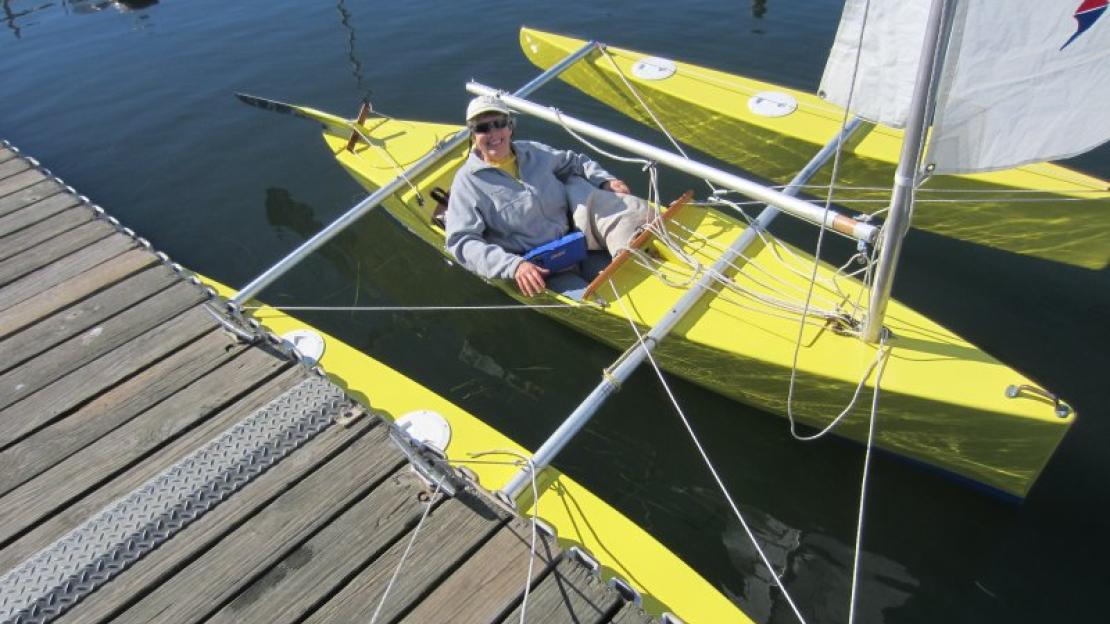
Sailboats - Daysailers
Seaclipper 10.
This 10′ long solo trainer and harbor racer is fun for the entire family. The crew sits in a secure cockpit, steering with foot pedals, with all sail controls arranged on a dashboard, close at hand. Performance is lively, with good steering control in a comfortable, forward facing, semi-reclining position. When you sail in company with other Seaclipper 10s, it’s even more fun. Construction is easy with beginner level stitch-and-glue plywood using epoxy adhesives. Most components are ¼″ thick plywood and ¾″ thick lumber. The mast and demountable cross-arms (akas) are made from aluminum tubing. Expect to spend 3-6 months working part-time to complete this boat. Plans are well illustrated and easy to read. The weighs about 150 lbs. and carries 60 sq ft of sail. The overall beam is 8′ for trailering. Check out the review from the July/August 2012 issue of WoodenBoat Magazine for more information.
Design Specifications
John Marples, Marples Marine, 295 Bayview Rd., Penobscot, ME 04476; 207–326–8096; [email protected] .
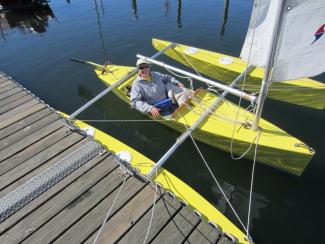
ACCESS TO EXPERIENCE
Subscribe today.
Publishing dynamic editorial content on boat design construction, and repair for more than 40 years.
1 YEAR SUBSCRIPTION (6 ISSUES)
Print $39.95, digital $28.00, print+digital $42.95, from plans & kits.
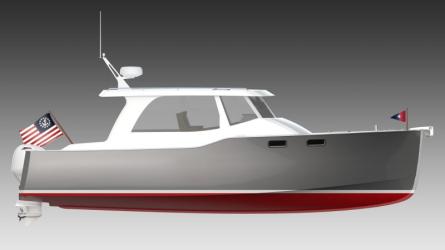
24' 8" Skipjack, CALICO JACK
From the community, free sailboat rigging.
Complete wooden sailboat rigging from 24′ Al Mason design sloop.
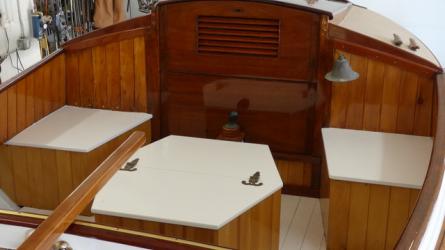
1928 16' Restored Anderson Catboat.
New hull, cockpit, rudder and centerboard. Restored deck, cabin, mast and rigging.
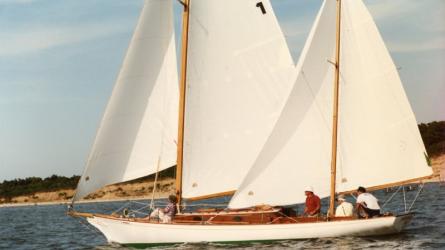
Original 1954 Herreshoff ARAMINTA For Sale
ARAMINTA is L Francis Herreshoff’s clipper bow ketch (Design No.
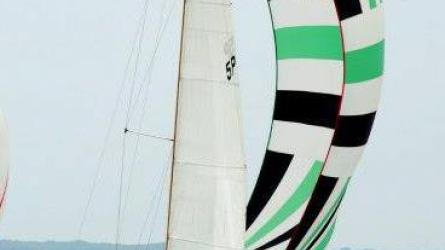
Five Ply/ Crocker 40 sloop
Crocker's Boat Yard is looking for a new home for the well known, “FIVEPLY”.

Seaclipper 10
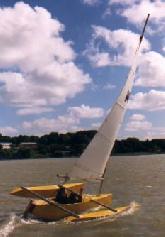
I used a Festool saw and guide to make the stems. The Festool guide and similar saw guides positively restrict the saw to move along a linear path only. These guides do not allow the saw to drift from the intended line unless something really awry happens. Before you lose interest on grounds that you don't have a Festool saw, the method described here will work for any circular saw guided by a straight edge that positively holds the saw to a straight line. I don't think that I would recommend this method with a mere straight edge that allows the saw to drift without positive control. The drift doesn't affect the workpiece since the drift away from the guide is into waste. However, saw drift while ripping or even crosscutting is not safe, particularly with thick wood blanks used to make stems.
Here is the method step by step.
Step 1: Make your blank(s) from suitable stock and layout your stem pattern(s) full size on the blanks.
Step 2. Drill two counterbores in the stem for mounting screws. See Fig. 4. I drilled counterbores that were 3/4 inch in diameter to fit the self-tapping Kreg screws I used for mounting the stem blank to the work table. Later these bores and the screw holes will be filled with epoxy.
Step 3. Grab some scraps and make the work table shown in Fig. 3. If you screw your head blocks to the table, position the screws well to the outside and make sure that your saw path will never hit them. In Fig. 3, my head block at the top of the table is way too short. I had to use a supplemental block to help support and clamp my saw guide to the table.
Step 4: Mount the blank to the table using self-tapping screws. I like Kreg screws for this. Position the blank so the cutting path runs up the table center and not through any screws on the outboard ends of the support blocks. The wide face of the stem faces up. You can position the stem blank anywhere you want so long as the saw blade path misses the screws. The main stem is 36 inches long, so this table is long to accommodate that stem as well as the shorter ama stem shown in the Figures.
Step 5: Clamp the saw guide to the table, aligned with the desired cut line. Both ends should be secured as we will need to make multiple passes. This Festool saw has a lot of power and can crosscut a 2 x 4 easily, but the saw has to work way too hard to rip this tapered bevel in one pass. So, I used four passes, cutting deeper by about 12 mm (about ½ inch) with each pass. Because the saw guide keeps the saw on line, each pass goes successively deeper on the same cut line as long as the saw guide is not moved between passes.
Step 6: Set the saw depth for the first pass, about 12 mm. Place the saw onto the guide in position and make the first pass. Then increase the depth of cut about 10 mm to 12 mm with each successive pass until the cut is complete.
Step 7: We want to make a stem with a cross section that is a trapezoid, not a parallelogram (I almost made some parallelograms). So, we need to remove the stem blank and remount it to make the proper cut. Remove the screws to free the blank. Turn the blank around so that the end that was at the head of the table is now at the bottom. The wide face of the stem is still facing up. If you do this right, the first bevel is now on the left and new bevel to be made is on the right.
Step 8: Secure the saw guide in position. Remember to clamp the guide at both ends so there is no movement of the guide during the multiple passes used to make the cut. Make sure you are cutting on the desired line and not the center line (I almost did this, too, on one stem). Double check to make sure the saw will not hit any screws at the foot or head of the table. If there is a screw in the way, you will need to move and remount the stem blank to avoid this.
Step 9: Again using four passes, cut the second beveled taper. Your stem is now done and can be removed from the table. The holes made in the stem for the counterbore and screws can be filled with epoxy to protect the stem from rot.


- Forum Listing
- Marketplace
- Advanced Search
- All Topics Sailing
- General Sailing Discussions
- SailNet is a forum community dedicated to Sailing enthusiasts. Come join the discussion about sailing, modifications, classifieds, troubleshooting, repairs, reviews, maintenance, and more!
new trimaran from Jim Brown/John Marples
- Add to quote
Very, very interesting! Don't really fancy hobbie, prindle, dart, etc rigs on trimarans but hey, at least they're widely available...
We bought a complete Hobie 16 on a trailer to cannibalize for the rig, sails, gudgeons ,etc... Sails alone would have easily exceeded the $400 spent. The Seaclipper 24 we are doing next will be built with a J-24 rig. Jim and John chose the Hobie rig for the very reason that you mentioned : availability.
That's what I thought so... I would consider such kinds of desings if I was to replace my nugget24 in a near future, but now I'm pretty much satisfied... The possibility of recycling one-design rigs is very atractive, except for the somewhat exagerated colourfulness of Hobbie's sails which I dont't particularly like...
The sails are definitely a little on the festive side, but the price was right. If you are thinking about replacing your Piver Nugget at some point, you may want to consider building John Marples' Seaclipper 24. I have a few drawings of it available for download free of charge on my website. It is the big sister of the S.C. 20 , but sports a cuddy cabin instead of the large open cockpit of the S.C. 20.
Jim Brown just released a video on Youtube of the seatrials of the Seaclipper 20 trimaran conducted here in St. Augustine.
- ?
- 173.8K members
Top Contributors this Month
Seaclipper 16 OC

A FAMILY BOAT FOR ALL SEASONS
The Seaclipper 16 Open Cockpit folding trimaran is designed for amateur construction from mostly ¼″ (6mm) plywood with epoxy adhesives and coatings. It can be built in less than 6 months by an individual or as a family project.The plans are highly detailed and easy to follow with full-size patterns for many hull parts provided to facilitate the process. The mast and sails are scavenged from a Hobie 14 beach catamaran , which are inexpensive and available used or new.
This boat can satisfy many different needs within a family. Its large cockpit and 11′ beam provide ample space for four people to sail comfortably , with compartments enough to stow the gear needed for family outings on lakes or along the coast. With a full crew, the 16 OC is a stable and lively daysailer—an ideal place for novices to learn sailing technique. Add a spinnaker and develop your skills further.
Sailed solo, the 16 OC is exciting to sail, given a steady breeze, speeds of 10 knots are likely. For intrepid sailors, the boat can be outfitted for short solo expeditions. It has plenty of compartments to stow provisions and extra gear. A small camping tent will fit over the cockpit and side deck. Add a side-mounted outboard (up to 4-hp) to provide auxiliary power.
A flat-wing folding system quickly reduces the beam from 11′ to under 8′ for legal trailering on the highway. The akas (crossbeams) are made from standard lumber materials, allows the boat to live on its trailer and be launched and ready to sail in less than an hour. One can even reduce the beam when afloat with the mast up, for instance in order to fit in a marina slip. Plans are included for building a custom trailer or for modifying a standard boat trailer to safely support all three hulls.
The Seaclipper 16 OC has two steering options : the standard tiller steering for conventional seating in the cockpit, and pedal steering to be used with sailing solo while seated on the cockpit floor. The rudder has a unique kick-up transom design with control lines leading to the cockpit. Weeds or debris on the rudder blade can be quickly cleared by pivoting the rudder up momentarily while sailing. The boat can be sailed onto the beach by releasing the rudder and pulling up the daggerboard. With the rudder and daggerboard partially up, one can explore the shallows to about 18″ of depth.
The Seaclipper 16 Open Cockpit is designed for sailing fun. Simple to build, easy to sail, on a very modest budget. Build a trailer from the plans, or buy one and build the bunks to support the boat. We encourage purchasing used outfitting gear; mast, sails, blocks and other fittings to reduce cost. Paint your boat a wild color and go sailing with your family soon.

- You are here:

- Seaclipper 16 Open Cockpit

IMAGES
VIDEO
COMMENTS
Re: Opinions on SeaClipper 10 Thanks for the input. Yea. I was thinking the Laser-rig like main that fit over the mast was simple, but assumed reefing just wasn't ever necessary. The twist control on the junk main, seems to make sense to me; but I am not an expert about junk rigs. Thanks again, if you ever post more videos on youtube, let me know.
A closer look at a Seaclipper 10 sailing and showing details of the rig and the modifications. Built by Bob Trygg in Duluth, MN.
That little boat was called the Seaclipper 10, a design by John Marples and it really was great fun to sail it. ... The 10' trimaran is quite easy to build using John's plans that provide complete details along with full size patterns for most of the parts. The boat is built primarily using ¼" plywood and standard lumber yard material. The ...
Naval architect, Mike Waters, provides a highly technical review of nine small folding trimarans, including six homebuildables. Review of nine small, folding day-trimarans (2010) by mike waters n.a. April 2010. As for all ... The Seaclipper 20 has a narrow, flat bottomed main hull (vaka) and like myself, Jim has realized that this shape is not ...
Seaclipper 10. The Seaclipper 10 is a solo trainer and harbor racer is fun for the entire family. The crew sits in a secure cockpit, steering with foot pedals, with all sail controls arranged on a dash board, close at hand. Performance is lively, with good steering control in a comfortable, forward facing, semi-reclining position.
The Seaclipper 16 is designed to take a Hobie 14 sailing rig. The pivoting aluminum mast, roller-furling jib, and fully battened mainsail are readily available from a wide network of Hobie dealers and may be found used in online classifieds. The Hobie 14 has a beam of 7′ 8″, so the Seaclipper 16, with a beam of 11′3″ can take better ...
Seaclipper10 handles a southeaster on a beam reach with a reef in the main.
Here are some pics of a recently built Seaclipper 10 trimaran (see below). We've seen the skill of the builder (sailor Bob Trygg) before. I love the name of this sailboat too :-) Check out the page here and another one here to see what I'm talking about. The Seaclipper 10 is a fun design by John Marples. We've seen it previously in this post.
The ocean frequently whips up some steep seas that concern me and would terrify my friends and the special-needs adults I work with. A year ago, I began building a Seaclipper 16 trimaran, designed by John Marples. I chose this trimaran for its stability yet speed. I also wanted this seating arrangement where the crew needn't scramble from side ...
I quote from an email after the owners 4th sail "we achieved 9 /10 kt to windward, 16 kt broad reaching under gennaker (14.8knots over 500 m and 14.3 over a nautical mile)". So not "touched 14 knots", but "averaged" it for a mile, a BIG difference as we all know That is a plywood hardchine main hull with Nacra 5.8 beach cat outriggers.
Anybody out there who owns, sails and/or appreciates the SeaClipper series of trimarans designed by John Marples about in the 1980's? There was a 34 ft, 38 ft and 43 ft - I think - and John regarded SeaClipper Trimarans - Cruisers & Sailing Forums
Seaclipper 10. This 10′ long solo trainer and harbor racer is fun for the entire family. The crew sits in a secure cockpit, steering with foot pedals, with all sail controls arranged on a dashboard, close at hand. Performance is lively, with good steering control in a comfortable, forward facing, semi-reclining position.
Type: Sailing trimaran Designer: John Marples Hull: Multihull Cabin: No Length: 10' Beam: 8' Draft: Max: 2'11" Min: 10" Weight Empty: 160 lbs. Ballast: No Rig: Cat ...
The Constant Camber 3-meter is a cat-rigged solo harbor racer and trainer. Spinnaker available for downwind sailing. All of the sail controls (main sheet, vang, downhaul, and outhaul, and the spinnaker guys and sheets come to you in the cockpit. This is a Constant-Camber version of the Seaclipper 10. Aft storage compartment in the main hull.
Seaclipper 20. By David Kagan - Stillwater, MN - USA. Making Tapered and Beveled Stems for the Seaclipper 20. To date, all my boat projects have been monohulls. But, I've dreamed of building a trimaran for a long time. In the spring of 2010, Jim Brown and John Marples introduced their plans for the new trimaran design called the Seaclipper 20.
John Marples recently completed the drawings of the Sea Clipper 20 a swing-wing trailerable trimaran, which Jim Brown first envisioned back in 2002. You can hear more about it on Small Trimarans. I had the honor of building the prototype for Jim, including having Jim spend the final chaotic week prior to launch working with my apprentices and ...
The first Seaclipper 20 under sail in Saint Augustine, Florida. The Seaclipper 20 is suitable as a family daysailer or an expedition trimaran. Mike O'Brien reviewed the design in WoodenBoat No. 217 (Nov/Dec 2010), and a class at the WoodenBoat School in the summer of 2011 built one in nine days (see WoodenBoat No. 227 (July/August 2012). The ...
Micro trimaran project
The Seaclipper 10 is a trainer and racer for the whole family. The Seaclipper 10 trimaran is cat rigged with optional symmetrical spinnaker for increased downwind performance. The home built Seaclipper 10 is a great beginner level project with its stitch and glue construction.
A FAMILY BOAT FOR ALL SEASONS. The Seaclipper 16 Open Cockpit folding trimaran is designed for amateur construction from mostly ¼″ (6mm) plywood with epoxy adhesives and coatings. It can be built in less than 6 months by an individual or as a family project.The plans are highly detailed and easy to follow with full-size patterns for many hull parts provided to facilitate the process.
http:www.smalltrimarans.com - Video of the first sea trial for the first-built Seaclipper 20 trimaran that was designed by Jim Brown and John Marples